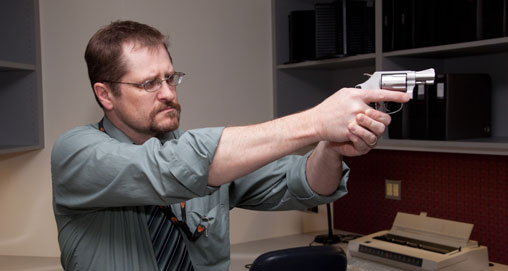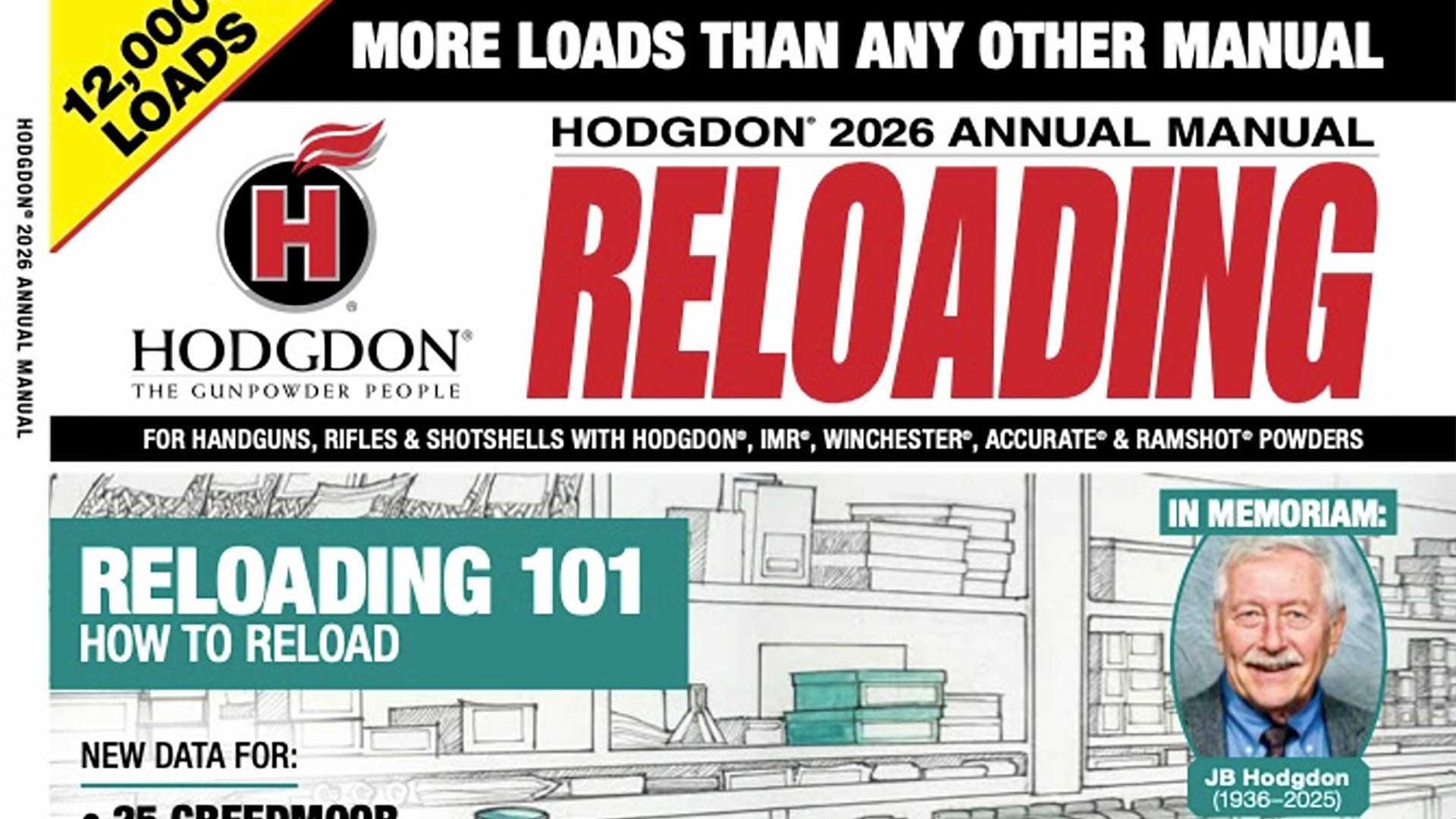
Law enforcement statistics tell us that the average gunfight is over after just a few shots have been fired, often no more than two to three rounds. However, the smart defensive shooter doesn't practice for the times when everything goes right. He practices for the times that everything goes wrong. This is the reason that responsible defensive-training schools put so much emphasis on the speed reload.
Learning to do a smooth, fast-speed reload with a revolver is more critical than with an autoloading pistol because, even with lots of practice, the operation takes a bit longer, and it involves more fine motor skills. The serious revolver shooter must learn a solid technique and then practice it over and over again. The following speed-reloading technique is one that comes from the days when most shooters carried a double-action revolver. It's a positive method and, with practice, can be executed rather quickly.
Regardless of whether the shooter is right- or left-handed, the revolver is laid in the left hand, with the left side of the gun up, during the reload. The index finger and little finger support the right side of the frame, in front and in back of the cylinder. The two middle fingers support the cylinder from the back side, and the left thumb is on the top side of the cylinder. As the right-hand thumb engages the cylinder release, the two middle fingers push the cylinder out of battery. At this point, the revolver muzzle is turned upward and the palm of the right hand is used to smack the ejector rod, dumping the empty cartridges.
As the left hand rotates the gun muzzle downward, the right hand goes to the belt for the speed loader and brings it to the revolver cylinder. The thumb and two middle fingers hold the cylinder still so that it won't rotate during the loading process. It is a good idea to locate the two cylinder chambers that are in the 10 and 11 o'clock positions and start those corresponding bullet noses in first. The other cartridges will then generally be lined up with their chambers, too. At this point, the release on the speed loader is activated and the cartridges are dropped into the revolver chambers. The speed loader is dropped, the cylinder is closed and the shooter is back in business.
Competition revolver shooters often use a different method, but this is the one that I recommend for defensive shooting. It gives the shooter a solid grip on his revolver throughout the reloading process. This is important because gunfights are very dynamic events. A person may be physically attacked by one criminal while he is trying to reload to deal with the other, armed criminal. It would be terrible, not to mention embarrassing, to have the revolver knocked from your hands at the exact time when it is most needed.
One of the most common mistakes that I see revolver shooters make is that they reload their revolvers and then take the time to put the empty speed loaders in their pockets, or back in their pouches. It's time wasted when you may very well need to be shooting. Once the speed loader is activated and the revolver cylinder is reloaded, just let go of the speed loader, get the cylinder shut and get back into the fight. The speed loader will fall away and you can pick it up later. Obviously, it is critically important to do this during the practice sessions as well. Develop the habit of just letting the speed loader go and retrieving it later.
Another common mistake for revolver shooters is that of moving the gun to belt level, near the ammo supply, to do the reload. The end result of this technique is that the shooter is bent over, looking down at the reloading process going on at belt level. The obvious problem with this technique is that the shooter loses nearly all of his or her peripheral vision. He can't see what is going on around him. If a person is executing a speed reload, it's because bad things are still likely to be going on around him. In a gunfight you've got to be able to keep up with where the bad guys are. You can bet that they are keeping up with you.
The defensive reload should be executed at some place between your shirt pockets and your chin. And the higher the better, so long as it doesn't interfere with our vision. About 12 inches in front of the body is about right, too. The reload takes place at about the same location that you would use to thread a needle (guys, get your wives or your embroidery-loving husbands to show you).
With practice, most of us have learned to speed reload an autoloader without ever looking at the pistol or the magazines. Unfortunately, we cannot do the same with a revolver. We have to, at least, glance at the cylinder when we are first starting the bullet noses into the chambers. The high reload, with head erect, allows us to do this and still do a good job of keeping up with what is going on around us.
As with any use of defensive force, reloading is best done behind cover. Cover being anything that will stop, or at least slow down, the bad guy's bullets. Of course, one should already be behind cover. Once you see that danger is imminent and unavoidable, you should get to the nearest cover. And one only leaves good cover when there is a strong, compelling reason for doing so.
Anyone who has tried to reload a revolver in a hurry knows that it is not an easy task. It is one that must be practiced over and over again until the movements become mechanical. The speed reload should become a regular part of everyone's dry practice at home and in the live-fire practice on the range. Every time you reload your revolver, for whatever reason, do it in a tactical manner. Practice doesn't make perfect; only perfect practice makes perfect.





































